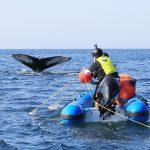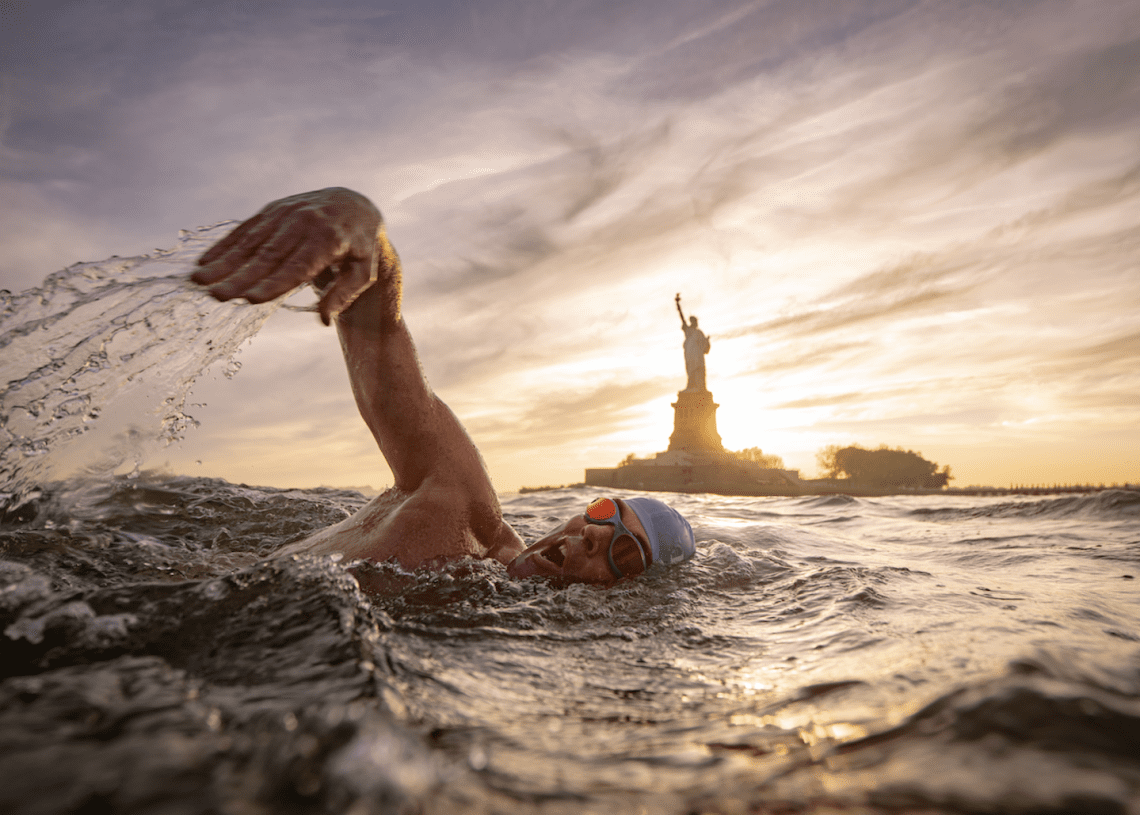
Lewis Pugh’s Hudson swim for cleaner waters
Lewis Pugh takes on his longest river swim yet, 507km of the Hudson River from source to sea, in his campaign for the health of our rivers and oceans. Stacey McGowan shares his story.
Lake Tear in the Clouds, a place name that invokes a sense of the mystical and of untouched wilderness, but also of a deep sadness. It was two years ago that I heard the name of the Hudson River source. I was in Iceland with the legendary endurance swimmer and UN patron of the Ocean, Lewis Pugh. He was in the midst of preparations ahead of his swim across the mouth of Ilulissat Icefjord in Greenland, a place that should be covered in ice and not swimmable.
When Lewis excitedly spoke of his ambition to swim the Hudson, from its source in the Adirondack mountains all the way to New York and the Atlantic Ocean, my immediate thought was, not a chance! But then I remembered – this was Lewis talking.
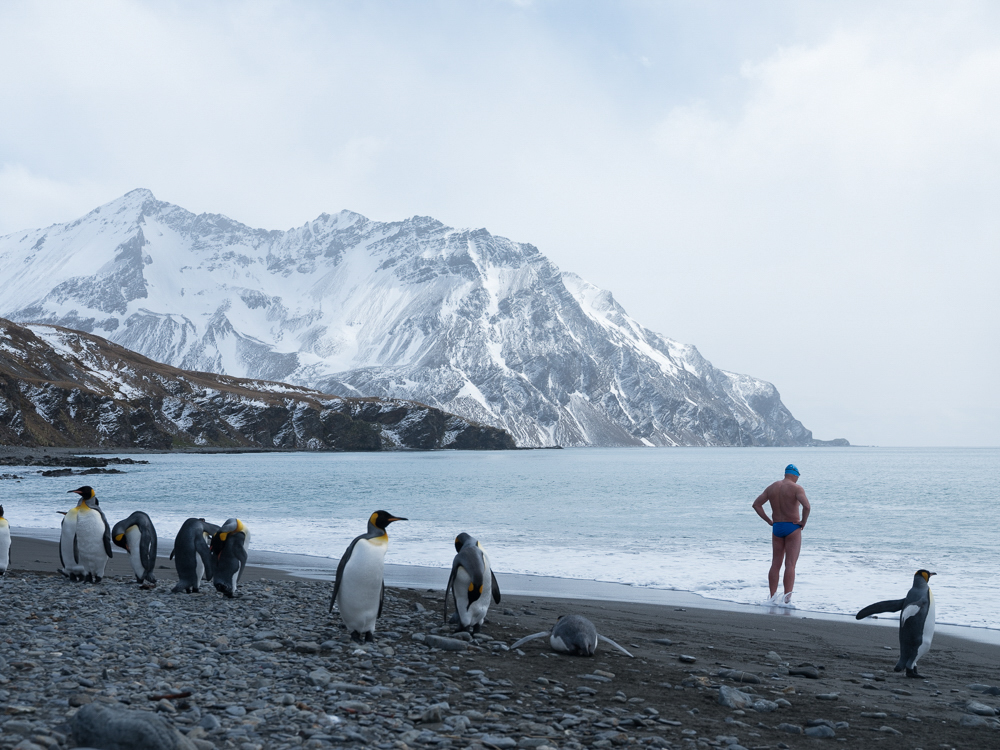
Lewis Pugh has spent more than 15 years calling for politicians to be courageous and commit to protecting the oceans and react meaningfully to climate change through his extreme swims. Pugh’s 2015 swim in the Ross Sea in Antarctica directly led to establishing the Ross Sea as a Marine Protected Area.
Each of his swims, completed wearing only his trunks, swim hat and goggles, are both a feat of endurance and send a clear message to our leaders. He swims in locations that highlight the current human caused disaster of the climate crisis and mass extinction in our oceans. Pugh’s swims often coincide with significant political and environmental meetings, such as his swim across the Red Sea in 2022 to highlight coral reef loss during the UN climate summit COP27 hosted in Egypt.
“All rivers should be drinkable, fishable and swimmable”
This year Pugh is swimming in the Hudson River, a river chosen as an example of extreme river pollution and that efforts can be made to restore river health. In his words, “Clean rivers are essential in the fight for global sustainability”.
The message of this campaign is particularly relevant here in the UK and close to the hearts of many swimmers considering recent news of river water ill-health across the UK. According to Surfers Against Sewage, in 2022 there were over 389,000 discharges of untreated sewage into UK rivers, totalling over 2.4 million hours of pollution. The UK is consistently ranked as one of the worst countries in Europe for water quality, with 75% of our rivers posing a serious risk to human health.
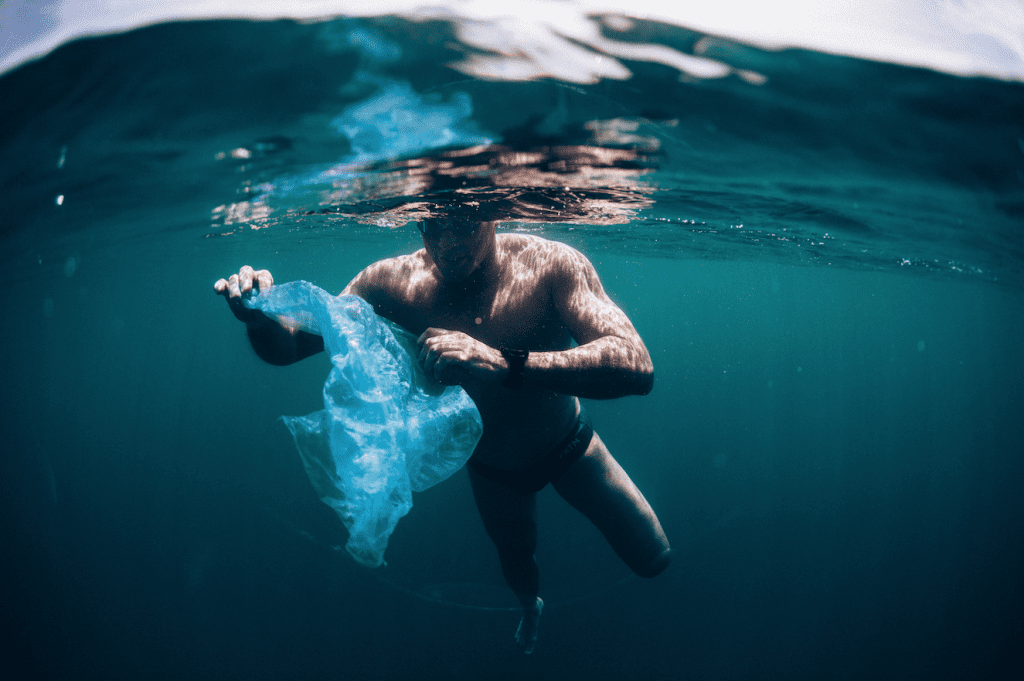
“If we want healthy oceans, we also need healthy rivers — it’s that simple,” Pugh, said. “The good news is that rivers are accessible to most people, and we know what it takes to get them healthy. I specifically chose the Hudson for this swim because of the environmental progress that’s been made on the iconic waterway in recent years.”
The legacy of the Hudson pollution by General Electric, who dumped an estimated 1.3 million pounds of polychlorinated biphenyls (PCBs) into the River between 1947 and 1977, still remains despite clean-up measures. Women under 50 and children under 15 are still advised by the New York State Health Department not to eat fish from anywhere in the river south of the Corinth Dam to New York City. Others are advised to limit their consumption of fish and crabs due to the environment posing a hazard to human health and increased rates of cancer. These injustices will persist for generations, says Riverkeeper, New York’s clean water advocate, who have stated they will continue their work to restore the Hudson River.
There has been further good news for the river this month; a measure to block discharges of radioactive water into the Hudson River as part of the Indian Point nuclear plant’s decommissioning has been signed into law.
A month-long journey
The Hudson Swim will take Pugh approximately one month to complete, ending in New York on 13 September ahead of nations ratifying the historic High Seas Treaty, which aims to protect biodiversity in international waters. This treaty follows nearly two decades of fierce negotiations to forge a common wave of conservation and sustainability in the high seas beyond national boundaries, covering two thirds of the planet’s oceans. This includes sustainably managing fish stocks, assessing pollution impact in waters beyond national borders, and lowering the rise in sea temperatures.
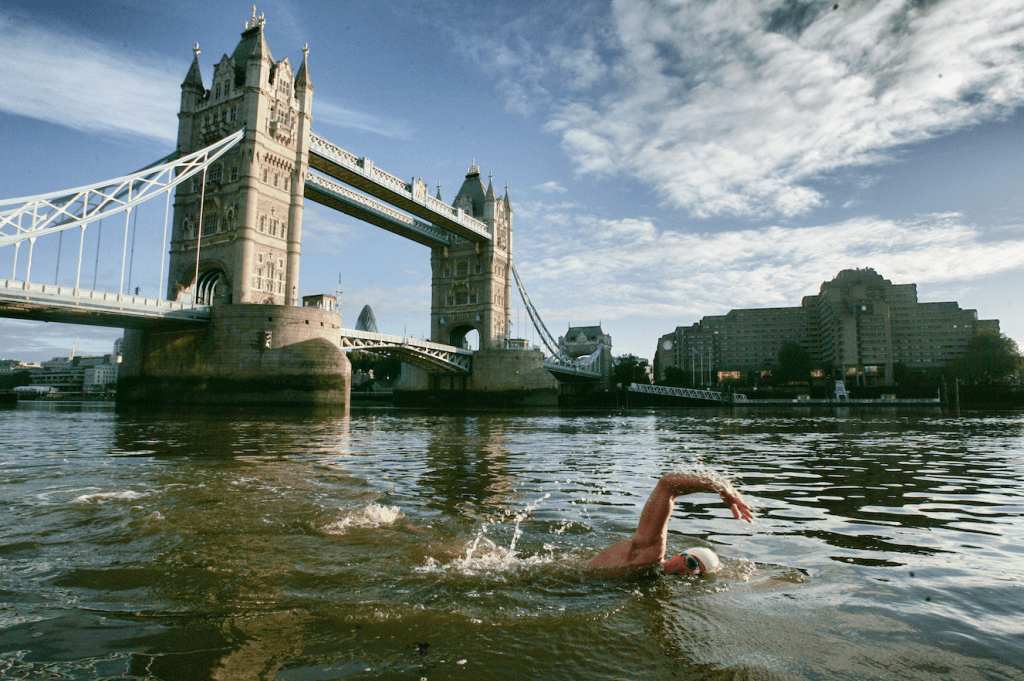
This is not Pugh’s first source to sea swim. In 2006 he swam the entire length of the river Thames, a swim that left him violently sick due to the levels of sewage pollution in the water. A major difference Pugh identifies between fresh and saltwater swimming is the increased pollution concentrations and the lack of salt to help wounds heal and prevent infections.
Halfway there
Currently Pugh is well over halfway through the Hudson swim, a 315-mile/507-km swim starting 1000m above sea level and covering around 16km a day, every day. However, starting a swim at the source of a river is not straightforward.
“The Hudson is truly majestic, but, like most rivers, it begins with a trickle in fairly rough terrain, so this swim will actually have to begin on foot” explains Pugh. In fact, it was an entire week into the swim before he could swim unobstructed. Until then he was running, often just in his speedos, whenever swimming was impossible.
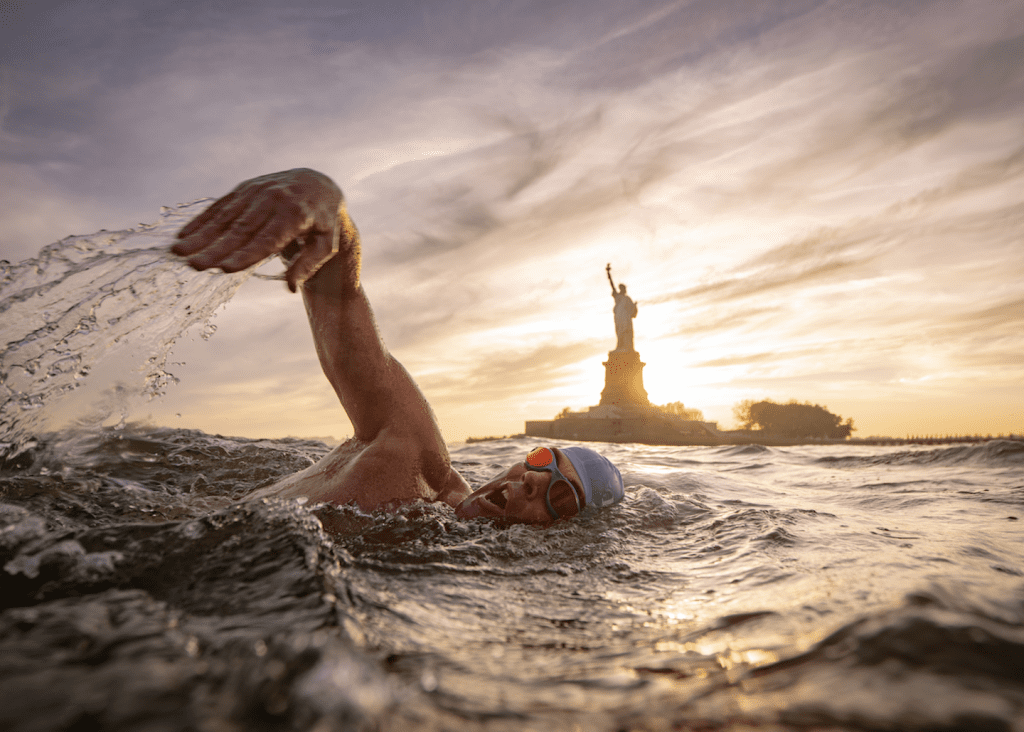
In the lead up to this swim, Pugh has been training every day from 5.30am at his home in Plymouth with a mix of swimming, running, weights and kayaking. Beyond the running and swimming, some of the additional challenges Pugh has faced so far have included rapids, snakes, mosquitoes, and even black bear encounters!
But for Pugh, these challenges only push him harder on his journey. He reminds us why he’s doing this: “I am calling for world leaders to prioritise healthy rivers as part of their commitment to protect 30% of land, inland waters and oceans by 2030. Rivers are the arteries of our world. We can’t have a healthy planet unless we have healthy rivers. Everything we put into our rivers ultimately ends up in the sea. So clean rivers are essential for healthy oceans.”
Follow Lewis
You can follow Pugh’s journey on social media. His Facebook page includes Q&As, interviews, news and photos from his swim and head over to the Lewis Pugh Foundation website for a roundup of each day and a predicted timeline of his progress. You can also find out more about River advocacy and read a showcase of ‘River Warriors’ around the world on the foundation website.
Words: Stacey McGowan
Add your voice to support Lewis Pugh’s call for world leaders to prioritise healthy rivers as part of their commitment to protect 30% of land, inland waters and oceans by 2030: count-us-in.com/step-detail/back-lewis-letter.
Sign up to The Dip, our weekly newsletter, for more swimming and environmental news.







